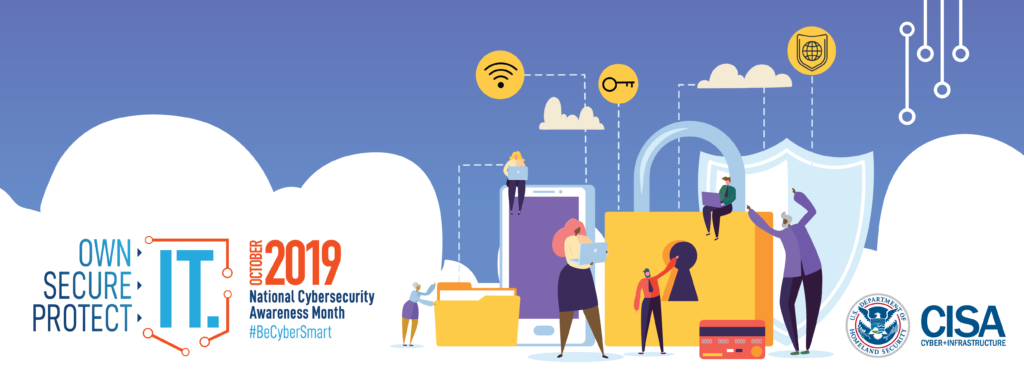
October is National Cybersecurity Awareness Month
Given how important email is to the way that we do business today, it’s important to be aware that for all of its convenience, email has opened a door to serious security threats.
Email has become the favorite tool for those looking to gain illegal access to business systems and sensitive information. This is why phishing scams have become a widespread problem – and one that almost everyone has experienced. So how can you protect yourself?
While most people like to think of themselves as email-savvy, email scammers are highly sophisticated and are constantly evolving their techniques in order to increase their likelihood of a successful breach. What you thought was protecting you in the past is likely no longer sufficient. It’s vital to adapt your security measures as the threat evolves. Failing to prevent a breach can be devastating for your firm.
Be on the lookout for scams. At their core, all phishing scams are email attacks that attempt to steal sensitive information or obtain illegal access to systems. Attackers hope that their emails lead unsuspecting victims to to click on a link that leads to a counterfeit site. From their the victim may is further coaxed into entering their account credentials (username and password). This then allows the attacker to gain unauthorized access to private information and/or systems.
It’s important to train your team on what to look for. Little things like tone, spelling, and grammar can tip one off that the message isn’t actually from the person claiming to be sending it. Attachments can also be a huge red flag – if something doesn’t look right, ask questions before you click on anything.
Make sure your system is as secure and up-to-date as possible. Every firm needs good perimeter defenses – all email traffic should be scanned and approved before entering the network, thereby reducing the likelihood that phishing emails even get to their recipients. SIEM tools exist to help detect and prevent system intrusions by outsiders. Malware and anti-virus programs should be a standard part of your infrastructure. Requiring complex passwords and regular password changes helps keep email accounts more secure. Using two-factor or multi-factor identification goes a step further toward preventing email accounts from being hijacked (though they don’t prevent your users from receiving hijacked emails). Browser settings can help identify fake links before employees click through to them.
Check out the National Initiative for Cybersecurity Careers and Studies National Cybersecurity Awareness Month (NCSAM) page for additional ideas.
Cyberattackers are relentless and the phishing game is ever-changing. But just because you can’t eliminate the risk doesn’t mean that you can’t take significant steps to prevent attacks from succeeding. With the right combination of understanding, regular training, and security countermeasures in your infrastructure, you’ll be prepared when the next phishing attack comes in. Taking action today can prevent you from being the next cybersecurity victim tomorrow.
